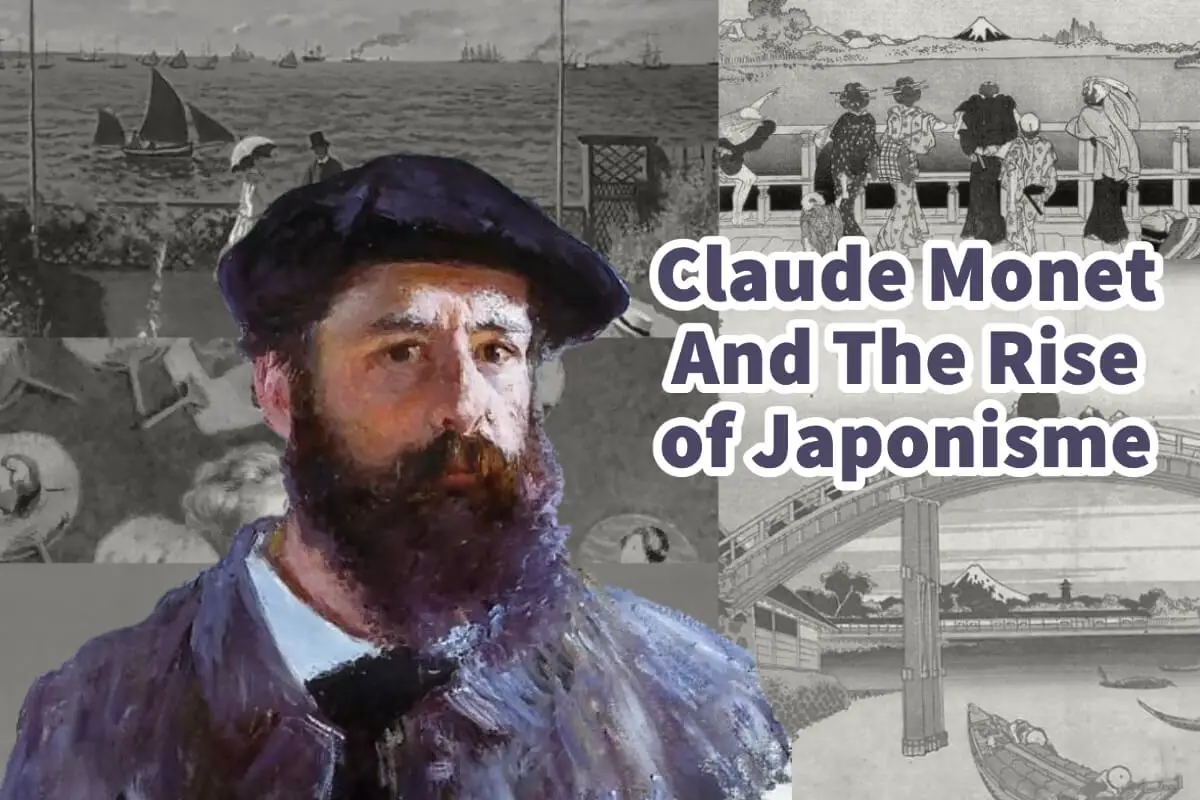In the late 19th century, many Impressionism artists in Europe had a deep interest in Japanese art. One Impressionism artist who was inspired by Japanese art was Claude Monet.
Japan opened its doors to the Western world for trade in 1853, and with that came a flood of Japanese art, artifacts, and textiles to Europe. Many Impressionist artists were fascinated with Japan, but one heavily influenced by Japanese art and the Japanese artist’s technique was Claude Monet.
Table of Contents
- The Rise Of Japonisme And Art
- Claude Monet And Japonisme
- Comparisons Of Art Subject Matter Between Japanese Art and Claude Monet’s Art
- Frequently Asked Questions
- Related Questions
The Rise Of Japonisme And Art
The term Japonisme was coined by the French art critic Philippe Burty in 1872. It was a word used to refer to Japan and Japan’s art influence on the West, particularly in Europe.
Following years of isolation, Japan started to open up its country to trade in 1853. The start of trade began to see the rise of Japanese art, artifacts, and fabrics, including silks and embroideries; they all made their way into the West and Europe.
What is unique is that Japan was closed off from the Western world for so long that the Japanese artists developed art and an artistic style that was utterly untouched by the rest of the world. The Japanese art was truly Japanese in every way.
Japanese Art Comes To Paris
The opening of Japan to the world, in particular, to trade started to come to France, where Monet and the other impressionists were located. The Paris International Exposition of 1867 brought Japanese art into France; this was the beginning of the Japonism movement in art.
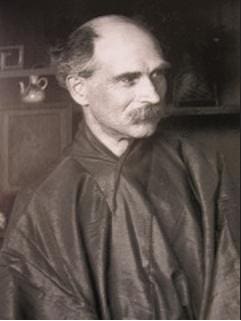
In Paris, the art dealer Siegfried Bing was one of the first importers of Japanese decorative arts into Europe. Bing brought Japanese art and artifacts into his shop La Porte Chinoise and promoted them in his magazine La Japon Artistique, published from 1888 to 1891.
Bing was also a significant supporter of Art Nouveau, a decorative style that shows its influence on Japan or the Japonisme influence.
Claude Monet And Japonisme
Claude Monet found the Japanese art that he saw in Paris fascinating. He was heavily influenced by Japanese printmaking, screen-painting, and Japanese woodblock prints.
We do not know when his fascination with Japanese art started, and it could be that he first saw Japanese art at the Paris 1867 exhibition or Bing’s La Porte Chinoise shop. Monet claims that he first saw the art when he was 16 or 17 years old, but this has not been verified as there was not a lot of Japanese art in Europe during that time.
We know that Monet was a collector of Japanese art, and he had many Japanese art prints hanging in his studio. Japanese art and the work of the Japanese artists daily surrounded him.
We do know that Monet was fascinated with Japanese art. One of his main fascinations was with the Japanese woodblock print artists of the Ukiyo-e period.
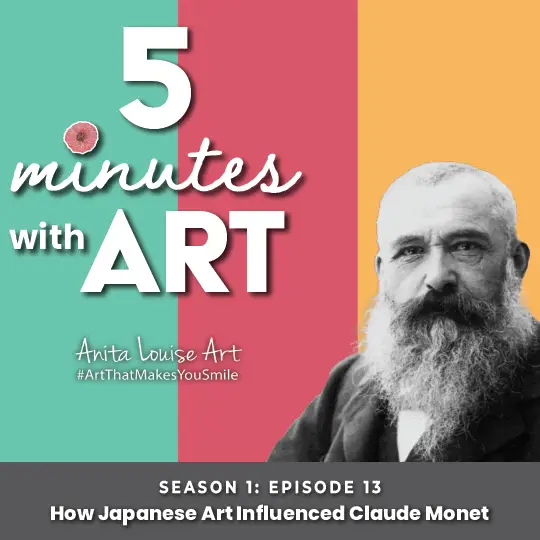
Listen To Our Podcast About How Japanese Art Influenced Claude Monet below or by clicking here.
Here are some of the ways he was fascinated with Japanese art and the art influenced him:
Linear Perspective Of Japanese Art
The Japanese woodblock print artists were experts at understanding the linear perspective of art. They were able to use their woodblock prints to create an illusion of depth on a flat surface.
The linear perspective of art has been around for a while, at least since the time of the Renaissance. What inspired Monet is how the Japanese used the linear perspective differently than what he had seen before.
Stylization Of Japanese Prints
The Japanese woodblock prints had a unique stylization, particularly how the Japanese woodblock print artists used monochrome color schemes in their woodblock prints. The Japanese woodblock print artists would use different shades and hues of the same color.
We can see some of the same influences and monochrome colors in many of Monet’s artwork.
Also, Monet liked how color was used in the Japanese woodblock prints. The color was put on a large area with striking contrasts. This included how fields of color could sometimes be used to flatten out a Japanese woodblock print.
Use Of Asian Influences And Patterns
Monet’s paintings used many Japanese patterns, including flowers; Monet liked how the Japanese would repeat these patterns on fabrics and other things. In a lot of Monet’s artwork, he did not try to hide or camouflage the patterns; this showed how fascinated Monet was with all things that were Japanese.
Nature Perspective In Japanese Art
Monet was also impressed with how the Japanese artists, particularly Ukiyo-e woodblock print artists, would use nature and other objects in their art. Things like water, bridges, and flowers and how the artist used these elements and positioned them in their work.
Positioning Of Their Models
Monet was also impressed with how Japanese woodblock print artists would position their models and people in their artwork. They had people looking down or in a uniquely Japanese pose and not the standard European poses.
You can watch our special video on this topic below.
Comparisons Of Art Subject Matter Between Japanese Art and Claude Monet’s Art
It is interesting to look at some Japanese artists and artwork by Monet side-by-side to see the Japanese or Japonisme’s influence on Monet and his work.
When we look at this, we can see some distinct similarities.
The Garden of Sainte-Adresse (Monet, 1867) Vs. Fuji From The Platform Of Sasayedo (Katsushika Hokusai, 19th century)
In 1867, Monet spent the summer with his family at Sainte-Adresse. He painted a scene of his parents and other family members when he was there.
In Monet’s painting, you can see how the sky, ocean, and terraces are all in the frame. The choice of colors, the positioning of the people, and the overall look are pretty similar to the woodblock print Fuji from the Platform of Sasayedo by Katsushika Hokusai.
We did not know when this woodblock print by Hokusai was made, but it was probably about the mid-1800s. But we know that Monet says this print, The Garden of Sainte-Adresse, was influenced by this woodblock print.
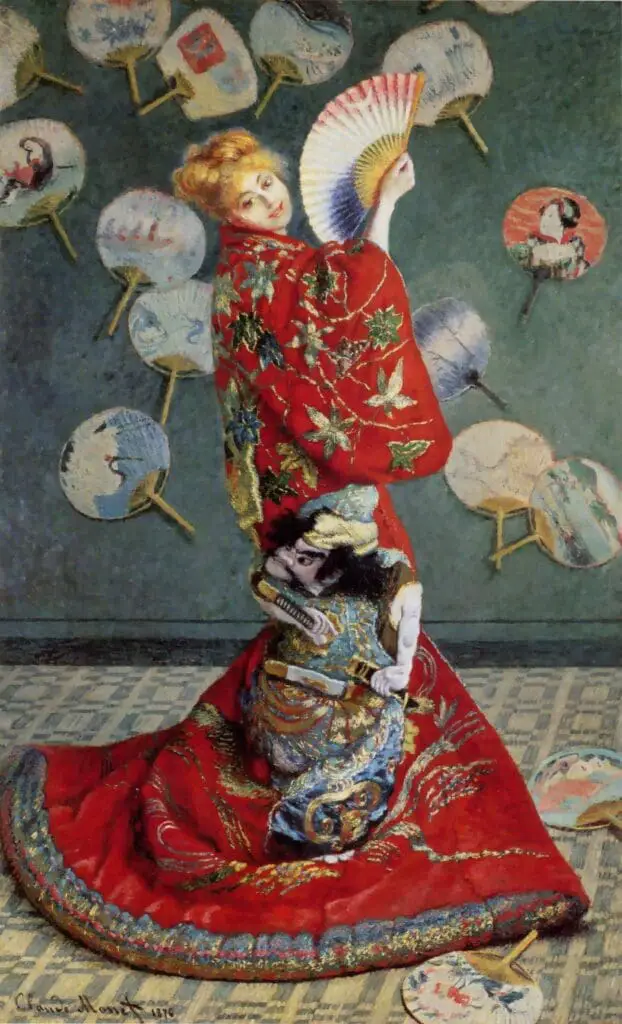
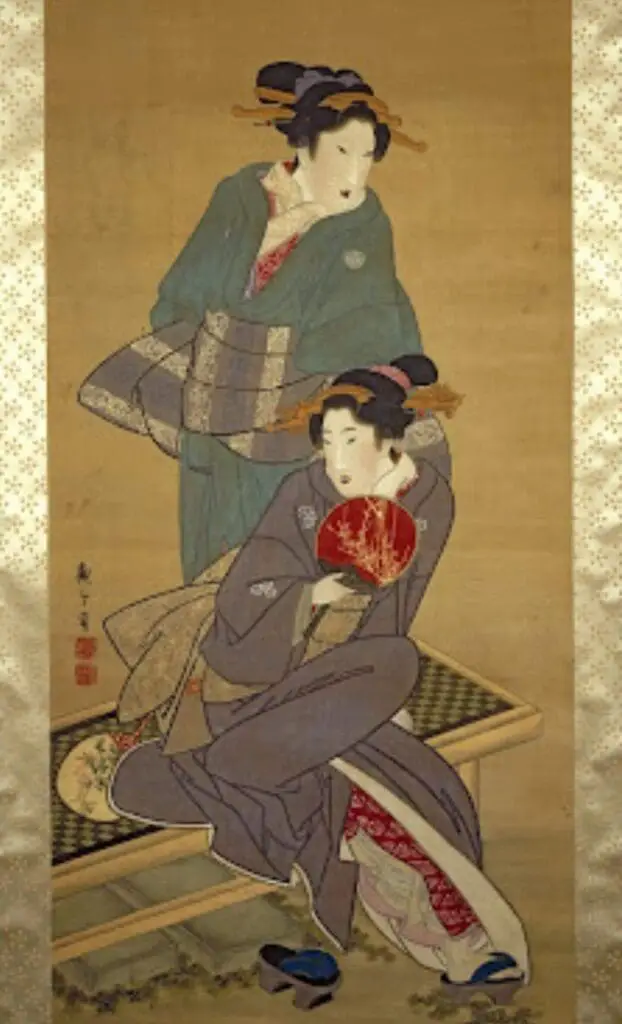
La Japonaise (Monet, 1867) Vs. Geisha By Kitagawa Tsukimaro (1820-1829)
La Japonaise has also been titled Camille Monet in a Japanese Costume. Monet painted this portrait of his wife in a Japanese-style kimono, surrounded by Japanese fans.
His wife is most notably wearing a blonde wig, which shows this is a Western, not a Japanese painting. The painting shows how extensively Japanese art, clothing, and culture had become very popular in Europe.
The Geisha by Kitagawa Tsukimaro is from a pair of hanging scroll paintings that are very typical of the Japanese style of women in a kimono with varied patterns and colors. You can see how the women are looking in the same direction and way while holding a fan.
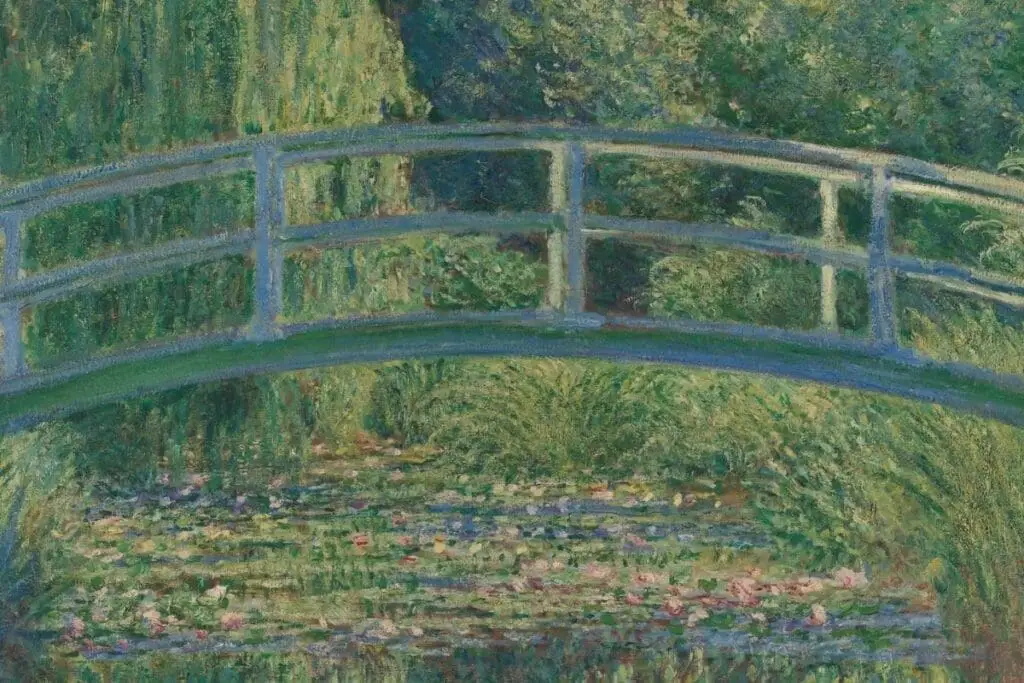

By Katsushika Hokusai, 1830-31
The Water Lily Pond (Monet, 1900) Vs. Under Mannen Bridge at Fukagawa (Katsushika Hokusai, 1830-31)
In 1883 Monet moved to Giverny, a small village near Paris, and bought some land. He built a pond, a water garden, and a Japanese-style bridge on the land. His garden at Giverny became his Japanese-style paradise in France for painting his artwork.
Monet was not just influenced by Japanese art; he really loved Japanese art and artists, culture, landscape, and way of life.
In his painting The Water Lily Pond, we can see similarities to Under Mannen Bridge at Fukagawa by Hokusai. Hokusai’s woodblock print and Monet’s painting of the bridge are the main focus of the painting.
We do not know if Monet saw this exact print by Hokusai, but as this was a prevalent theme and Japanese layout, he must have seen some similar Japanese woodblock prints where the bridge was the central focal part of the art.
Undoubtedly, Claude Monet was influenced by Japanese culture, art, and life. He even incorporated it into his artwork and his way of life. The rise and start of Japonisme happened during Monet’s lifetime and continued to influence him throughout his life.
Anita Louise Art is dedicated to art education, great artists, and inspiring others to find and create their art. We love art that uplifts and inspires. #ArtToMakeYouSmile! #ArtToMakeYouHappy!
If you are interested in seeing any of my art, you can find out more by clicking here. If you are interested in what inspires me and my paintings, you can discover more by clicking here.
We have a free newsletter and would love you to be part of our community; you can subscribe to the newsletter by clicking here. If you have any questions, I would be happy to talk to you at any time. You can reach me, Anita, by clicking here.
Subscribe to our Anita Louise Art YouTube Channel filled with great videos and information by clicking here.
Frequently Asked Questions
Who was Claude Monet?
Claude Monet was a French painter and a key figure in the Impressionist movement that transformed French painting in the second half of the nineteenth century. He is best known for his landscapes and scenes of everyday life.
What is Japonisme?
Japonisme is a term that refers to the influence of Japanese art, fashion, and aesthetics on Western culture, particularly in the late 19th and early 20th centuries.
How did Monet come into contact with Japanese art?
Like many European artists of his time, Monet was exposed to Japanese art through the import of Japanese goods and art prints, known as ukiyo-e, into Europe.
How did Japanese art influence Monet’s work?
Japanese art, particularly woodblock prints, influenced Monet’s compositions, color palettes, and themes. The asymmetrical compositions, close-up views, and flattening of the picture plane seen in many of Monet’s paintings reflect the aesthetics of Japanese prints.
Can you give examples of Monet’s paintings influenced by Japonisme?
Monet’s “Water Lilies” series and his painting “La Japonaise” (Camille Monet in Japanese Costume) are often cited as examples of the influence of Japonisme in his work.
Did Monet collect Japanese prints?
Yes, Monet was an avid collector of Japanese prints. He had a collection of over 200 ukiyo-e prints, which he used as sources of inspiration.
Did Monet ever visit Japan?
No, Monet never visited Japan. His knowledge of Japanese culture and art came from books, exhibitions, and the Japanese prints and objects he collected.
What is the significance of Monet’s painting “La Japonaise”?
“La Japonaise” shows Monet’s wife, Camille, dressed in a bright red kimono with a blonde wig, surrounded by fans. It reflects Monet’s engagement with Japonisme and his interest in exoticism, but it’s also seen as a commentary on the French fascination with all things Japanese during this period.
Related Questions
Claude Monet And His Art Work
Claude Monet was one of the more prolific and consistent Impressionism painters. He was a great believer in painting what is in nature and painting the changing light. He was an en Plein air painter. He is known for his strong and bold colors and short brush strokes.
By clicking here, you can learn more by reading Claude Monet And His Art Work.
Similarities Of Claude Debussy And Claude Monet
Claude Debussy is a musical composer. Claude Monet is an artist. They are both considered Impressionists and were not afraid to break from the tradition of their day to create something new. Both Debussy and Monet greatly influenced many artists that went after them.
By clicking here, you can learn more by reading Similarities Of Claude Debussy And Claude Monet.
What Does Japonisme Mean?
The term Japonisme is about the influence of Japanese art on European culture and arts. Most notably, the influence Japanese woodblock prints had on the Impression art movement. Many of the prominent artists from the Impressionism art movement were inspired by the Japanese Ukiyo-e woodblock print artists.
By clicking here, you can learn more by reading What Does Japonisme Mean?.

